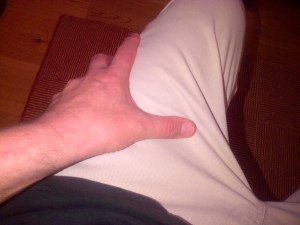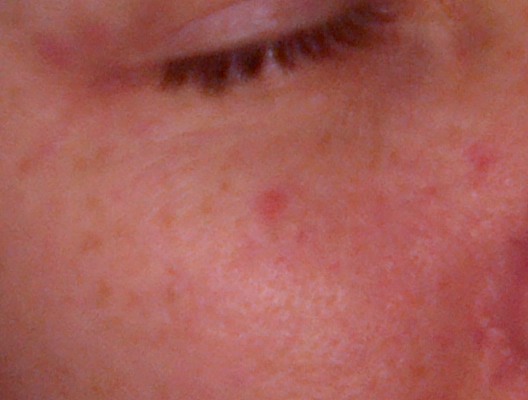
There have been significant advances in knowledge regarding the pathology, etiology, assessment, and treatment of several significant neurogenic pain disorders regularly encountered by neurorehabilitation professionals in both inpatient and outpatient care. In a collection of articles published in NeuroRehabilitation, experts describe the latest advancements in neurogenic classification and pain management and treatment of these disorders.
Neurogenic pain results from injury to or disease of the central and/or peripheral nervous system. Types of neurogenic pain include neuropathic pain (due to nerve damage or disease), central pain (arising from a lesion in the central nervous system – such as thalamic pain following stroke), and deafferentation pain (the interruption or destruction of the afferent connections of nerve cells), among other mechanisms.
“There are multiple emerging trends in neurogenic pain management with particular reference to complex regional pain syndrome (CRPS), neuropathic pain, and cranial neuralgias,” explains Guest Editor and co-Editor-in-Chief Nathan Zasler, MD, Concussion Care Centre of Virginia Ltd. and Tree of Life Services, Inc. Dr. Zasler is also a clinical professor in the Department of Physical Medicine and Rehabilitation at Virginia Commonwealth University in Richmond, VA, USA. “The topic of post-traumatic cephalalgia (headache) remains highly debated as does the area of functional/psychogenic pain disorders, both of which are elaborated on in this thematic issue of NeuroRehabilitation along with other more common, controversial, and/or challenging neurogenic pain disorders.”
Articles in this issue provide in-depth reviews of:
- Diagnosis and treatment of CRPS (Allison Kessler, Min Yoo, Randy Calisoff)
- Classification, pathology, etiology, and treatment of neuropathic pain (Douglas Murphy, Denise Lester, F. Clay Smither, Ellie Balakhanlou)
- Central pain syndromes (Deena Hassaballa, Richard L. Harvey)
- Treatment options for craniofacial neuralgias (Sheryl D. Katta-Charles)
- Residual limb pain or “phantom” pain/sensation after amputation (Gary Stover, Nathan Prahlow)
- Post-traumatic cephalalgias or headache (Brigid Dwyer and Nathan Zasler)
- Functional pain disorders (Stoyan Popkirov, Elena K. Enax-Krumova,Tina Mainka, Matthias Hoheisel, Constanze Hausteiner-Wiehle)
Highlighted contributions in this issue include:
Douglas Murphy, MD, Regional Amputation Center, Central Virginia Veterans Health Center; and Physical Medicine & Rehabilitation, Virginia Commonwealth University Medical Center, Richmond, VA, USA, and colleagues review the epidemiology, classifications, pathology, non-invasive and invasive treatments of peripheral neuropathic pain. Neuropathic pain occurs in up to 10% of the general population and in patients with neck and back pain and diabetes. Chemotherapy can also be associated with the development of painful neuropathies in 19%-85% of cases. Characteristic symptoms are burning, tingling, lightning bolts of pain, sharp sensations, unpleasant cold sensations, and electric-like sensations. Secondary symptoms and problems can include anxiety, depression, sleep disturbances, and impairment of quality of life.
“Peripheral neuropathic pain has a cost to the patient and society in terms of emotional consequences, quality of life, lost wages, and the cost of assistance from the medical system, and thus deserves serious consideration for prevention, treatment, and control,” notes Dr. Murphy. “There is a wide range of pharmacologic options to control this type of pain, and when such measures fail, numerous interventional methods can be employed such as nerve blocks and implanted stimulators. It is an evolving therapeutic arena. Physicians providing these therapies need to use diligent patient selection processes and a multimodal, individualized pain program that supports a strong risk/benefit ratio.”
Brigid Dwyer, MD, Department of Neurology, Boston University, Boston, MA, USA, and Nathan Zasler, MD, review the highly-debated topic of post-traumatic cephalalgias (PTC) or post-traumatic headache. They note that PTC remains controversial on a number of levels and provide an overview and discussion of current classification and limitations, epidemiology, and risk factors for PTC, subtypes of PTC and associated pain generators, as well as pathophysiology.
They contend that the current classification using the International Headache Society’s International Classification of Headache Disorders has significant limitations that warrant reassessment. They also review the clinical course of PTC and prognostic risk factors for pain persistence. The authors discuss clinical management and limitations of the existing literature on PTC, noting that medication overuse may paradoxically exacerbate headache symptoms and prolong recovery times when superimposed upon pre-existing headache pathology.
According to Dr. Dwyer and Dr. Zasler, “A multifactorial diagnostic and treatment approach, cognizant of biopsychosocial factors as well as the unique interplay between central and musculoskeletal pain, sleep, mood, cognition and exertional limitations, continues to be most successful.”
“The most significant challenges are dissemination of new knowledge, in particular practice guidelines, to clinicians in the trenches treating neurogenic pain disorders,” concludes Dr. Zasler. “As guest editor of this issue, I am very grateful to all the contributors and their high quality of work, which will hopefully be appreciated by readers and advance knowledge in this area of neurorehabilitation.”



